
About Andrew Cusack
 Writer, web designer, etc.; born in New York; educated in Argentina, Scotland, and South Africa; now based in London.
Writer, web designer, etc.; born in New York; educated in Argentina, Scotland, and South Africa; now based in London. read more
News
Blogs
Reviews & Periodicals
Arts & Design
World
France
Mitteleuropa
Knickerbockers
Argentina
The Levant
Africa
Cape of Good Hope
Netherlands
Scandinavia
Québec
India
Muscovy
Germany
Academica
Betty’s Bay
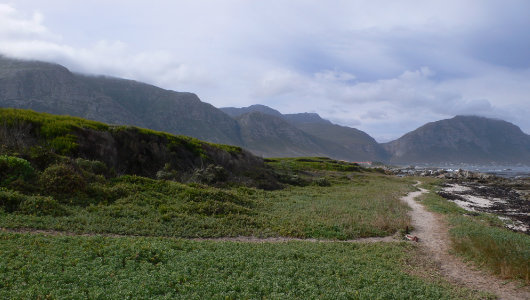
Travelling down the east side of False Bay, through the happy town of Rooiels, past Pringle Bay, and around Cape Hangklip sits the little village of Betty’s Bay. Nudged between the waters of the Indian Ocean and the rugged mountains of the Kogelberg, this is one of the most beautiful corners of the Cape. At the same time, it is just sixty miles (as the crow flies) from die moederstad itself — Cape Town. In days long since past, Betty’s Bay and the surrounding area of the Overberg were the hiding places for runaway slaves, sailors deserting their vessels, and smugglers of every kind. The Overberg takes its name because it is over the Hottentots Holland mountains from Cape Town — just outside the immediate purview of the earnest authorities in that swarming port, the “tavern of the seas”.
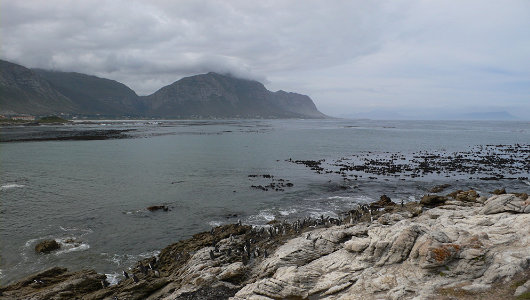
While Betty’s Bay has a few feathers in its cap — among them the splendid gardens gifted by Harold Porter and now bearing his name — its most famous inhabitants are a well-dressed colony that has claimed Betty’s Bay as its own. Spheniscus demersus, better known as the African penguin, is spread all along the coast here as far north along the Atlantic as Namibia and as far east along the Indian Ocean as Algoa Bay. The largest colony is undoubtedly on Dyer Island in Gansbaai (the Bay of Geese), but since the 1980s the African penguin has begun to make his home not only on more isolated coastal islands, but also on the mainland itself, at Boulders Beach on the Cape Peninsula and here at Betty’s Bay in the Overberg.
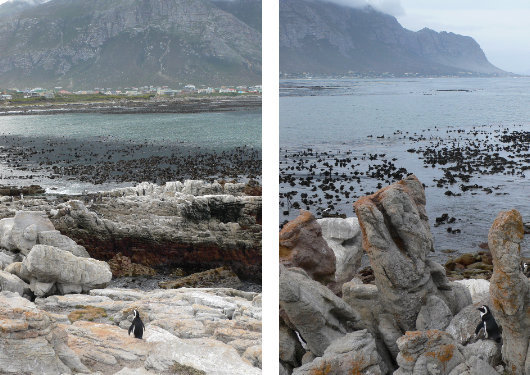
The move to the mainland has been made possible by the decline of the natural predators who previously stalked the land. That said, leopard attacks on the Betty’s Bay colony are not unknown. The closeness of Boulders Beach to Cape Town — it is just outside Simon’s Town — has made it a major destination for tourists eager to see the African penguin. Much of Boulders is now part of the national park that encompasses much of the Cape Peninsula, but, just outside of the park’s jurisdiction, it is still possible to bath among the penguins, who are generally quite friendly and allow humans to approach within three or four feet before deciding they prefer otherwise.
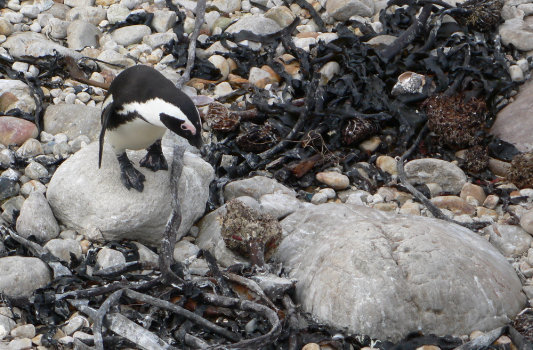
Among the amusing traits of the dinner-jacketed inhabitants is the way they hop along from rock to rock, often pausing first to consider carefully which rock is worthy of hopping to.
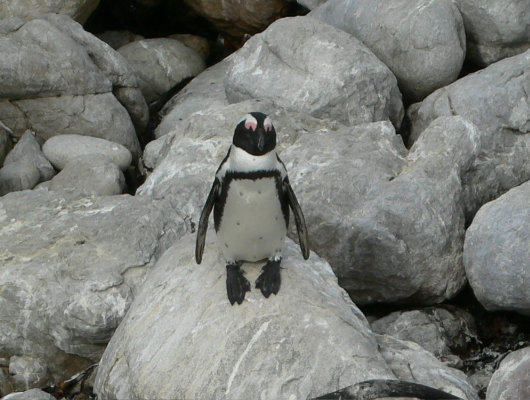
The closest relatives of Spheniscus demersus are the Magellanic penguins breeding in Argentina, Chile, and the Falklands, as well as the Humboldt penguins of coastal Peru and Chile, and the penguins of the Galápagos Islands. The African penguin is generally between 26 and 28 inches tall, with a pattern of black spots on the chest that is unique to each individual penguin. Their distinctive black and white colour is a particularly advantageous form of aquatic camouflage. Their white underbelly makes the indistinguishable to their marine predators, while their black exterior matches the dark colour of the water for airborne & land-bound predators.
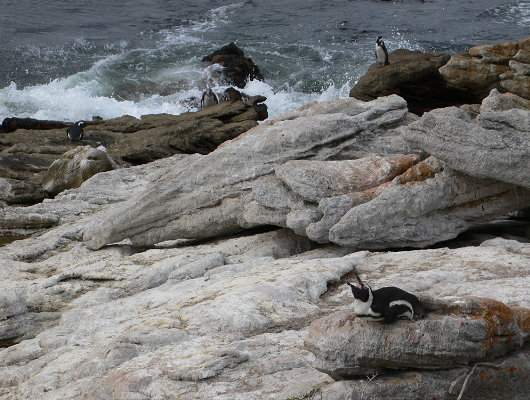
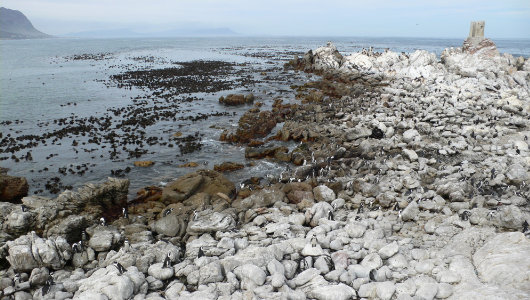
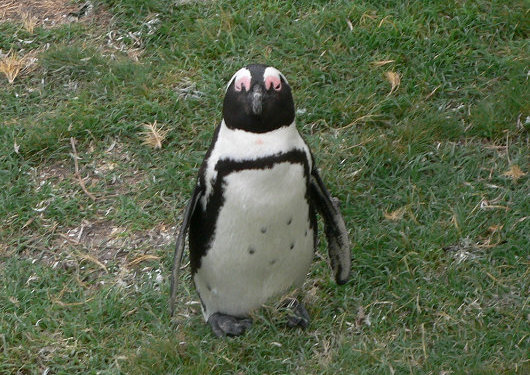
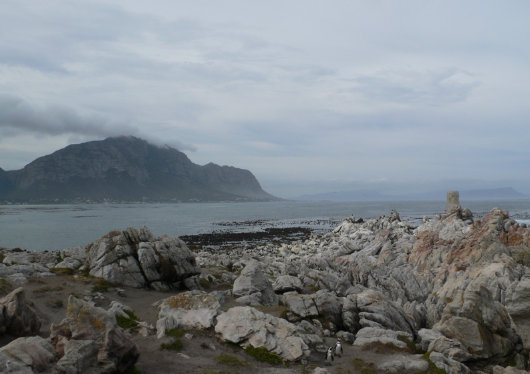
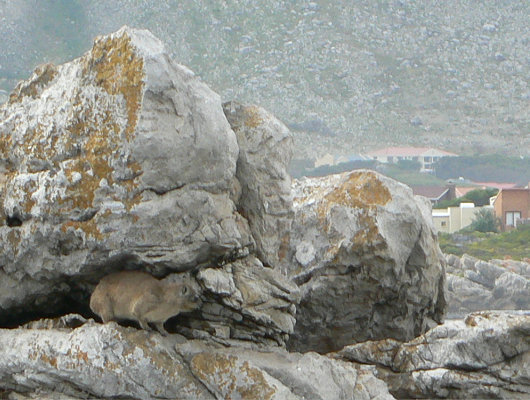
The penguin isn’t the only resident of Betty’s Bay, however. There also lives the dassie (Procavia capensis), a kind of hyrax native to the Cape and quite similar to the guinea pig. See him there, hiding in the rocks?
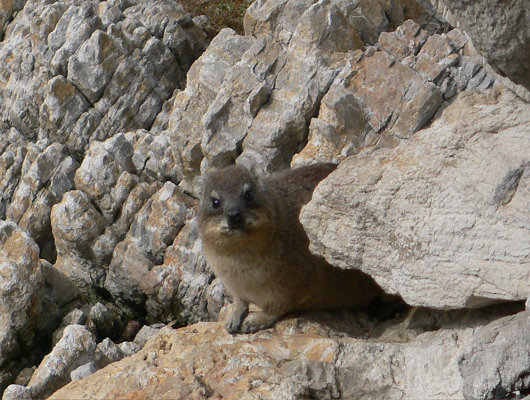
Like the penguin, the dassie is a charming creature. He minds his own business and has little care for human affairs, but often scuttles about in a somewhat hectic manner. Unlike the penguin, he is an expert rock climber.
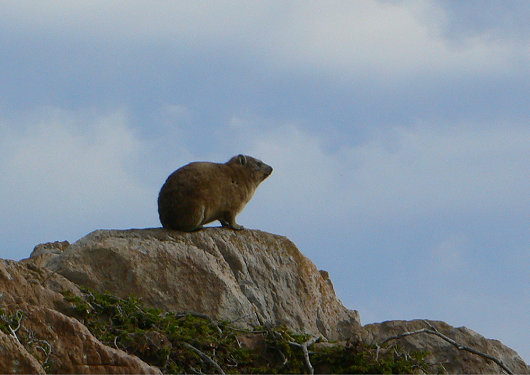
Strangely, there is a belief widespread among the scientific community that dassies — yes, dassies — are the closest living relative of the elephant. More recent research, however, has led many to conclude that it is the Sirenian order (manatees & dugong) that are the closest extant relatives of that mighty beast.
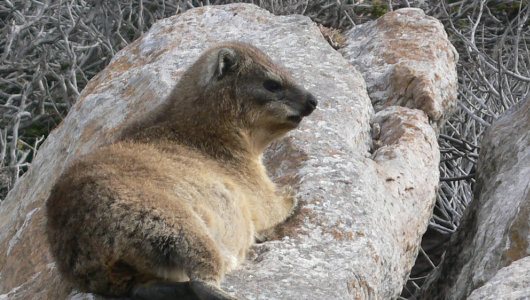
When not napping or dining, dassies are fond of basking on the rocks, even on cloudy days that afford little sunshine.
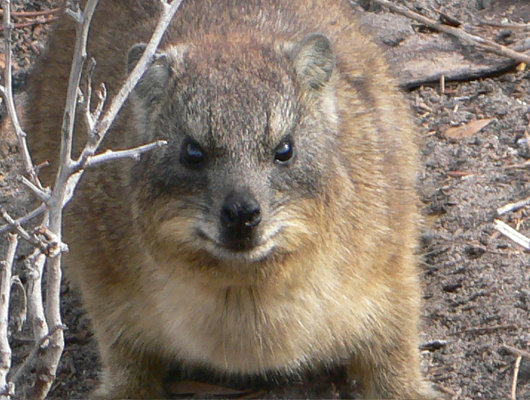
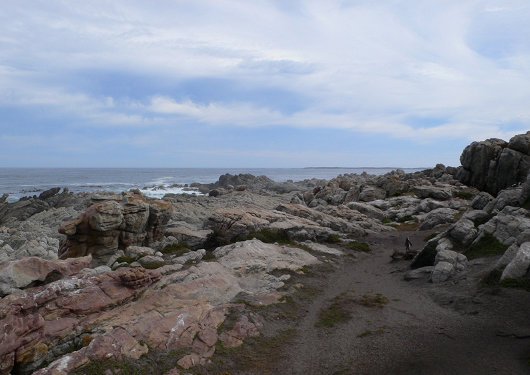
And so farewell to Betty’s Bay, that most beautiful corner of the Cape; farewell until next time, at least.
Search
Instagram: @andcusack
Click here for my Instagram photos.Most Recent Posts
- Burns Tower April 19, 2024
- Patrick in Parliament March 18, 2024
- Articles of Note: 13 March 2024 March 13, 2024
- Cambridge March 9, 2024
- Taken on Trust March 4, 2024
Most Recent Comments
Book Wishlist
Monthly Archives
Categories



Delightful photos, Andrew. Are they all yours?
I expect we will toast you tonight at our postponed Fisher gathering. Cheers.
Indeed, I took these photos about a fortnight or so ago.
Many hearty Easter greetings to all my Fisher friends!
Terrific photos, Andrew, of an obviously magical place. Lucky you!
That last creature looks annoyed. Did he attack?
No Andrew, No,no no. False Bay is still the Atlantic, the true divide between the two oceans is Cape Agulhas another hundred miles or so to the East.
At least you have not succumbed to the canard on an international airline’s web site: that Cape Point is where the Atlantic and Pacific Oceans meet….
False Bay is still the Atlantic only according to scientists; the same people who tell us Pluto isn’t a planet.
Traditionally, Cape Point is the dividing line between the Indian & the Atlantic, and this is a traditional blog, not a scientific one.